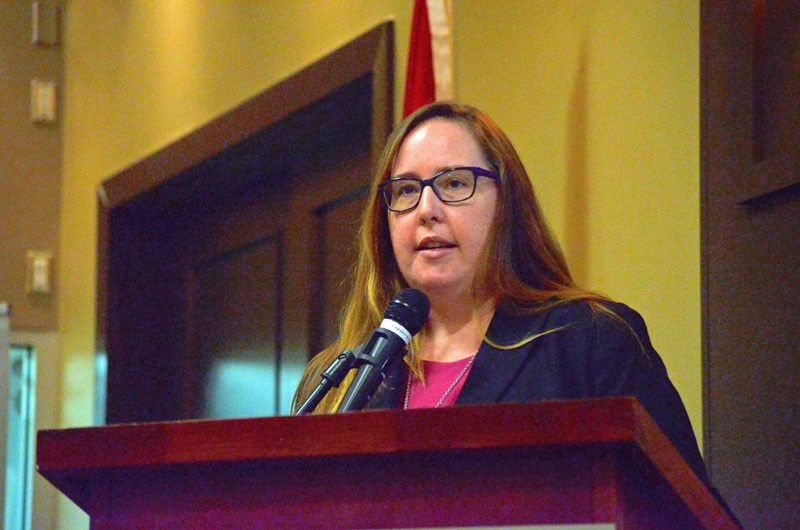The NDP government will not consider a differential wage for students under 18 or those entering the workforce for the first time.
Labour Minister Christina Gray spoke at Tuesday’s St. Albert and District Chamber of Commerce luncheon. The question on the tip of many a tongue: whether or not the government would consider a differential wage for students and/or inexperienced workers?
Simply put, the answer is no.
Late last month, the government announced its plan to raise the minimum wage to $15 per hour by 2018, as promised during last year’s election campaign.
General minimum wage will rise by $1.00 to $12.20 per hour and the current liquor server rate will be abolished effective October 1, 2016.
Minimum wage will rise a further $1.40 to $13.60 per hour on October 1, 2017, and by $1.40 to $15 per hour on October 1, 2018. Weekly and monthly rates will rise by equivalent amounts.
Approximately 60,000 Albertans earn minimum wage. Out of this, 77 per cent of these workers are working in permanent jobs; three quarters are adults; and one-third of them have children.
While many in attendance agreed with the idea of a living wage, they questioned whether a “blanket policy” was the best approach to tackling the issue of poverty within the province – especially given that that teens and young adults make up about 50 per cent of this demographic.
“Would the government consider looking at the problem differently? Were talking about a very small segment of the working population here,” said Brian Bachynski, vice-chair of the Chamber and publisher of the St. Albert Gazette.
There have been many suggestions about how it could better target the intended population, including a differential wage for students still living at home, who are often saving up for post-secondary or earning some extra pocket money.
In Ontario, students under 18 make $10.70 per hour – 70 cents less than other minimum wage earners in the province – as long as they work less than 28 hours per week when school is in. More hours are allowed during a school holiday.
Nova Scotia has what it calls an inexperienced employee wage rate for workers who have not been employed for more than three months by any employer to do the work for which he/she is presently employed.
Gray said the government looked into the possibility, but ultimately decided against it.
“We were concerned about creating tiers of employment that would leave the door for younger workers to be taken advantage of and older workers to be not included in the job market,” said Gray.
Some businesses and lobby groups have argued that the increase will lead to less opportunity for those looking to enter the workforce. The available research shows mixed results.
Another big concern has been whether or not the increase will ultimately help or hinder low wage earners.
“Have we done an assessment of the results of the first increase? Are we really helping these people? Are they losing some of their other benefits now because their income has increased?” asked St. Albert and District Chamber of Commerce CEO and president Lynda Moffat.
Minister Gray said that the government’s financial modelling has shown there will be some instances where the hike removes certain benefits, but that the government was developing plans to prevent that from happening.
Moffat, as well as current and former chamber chairs, Ken Macrae and Joe Becigneul, implored the minister to study the effects this increase has on small business in parallel with other economic pressures, such as the proposed increase in CPP contributions.




